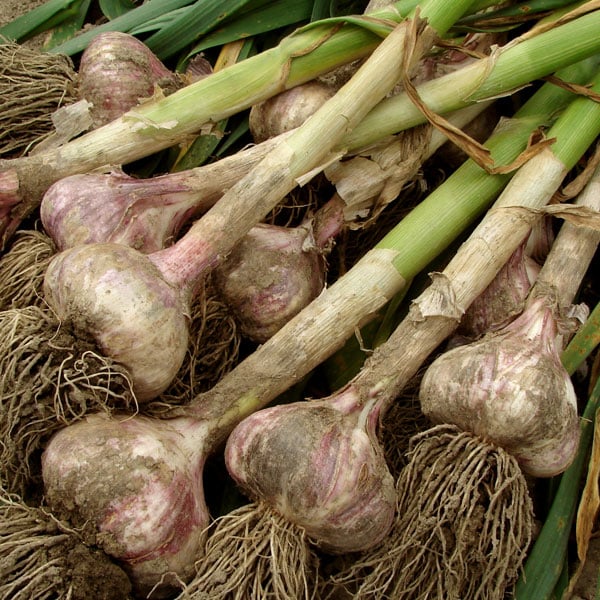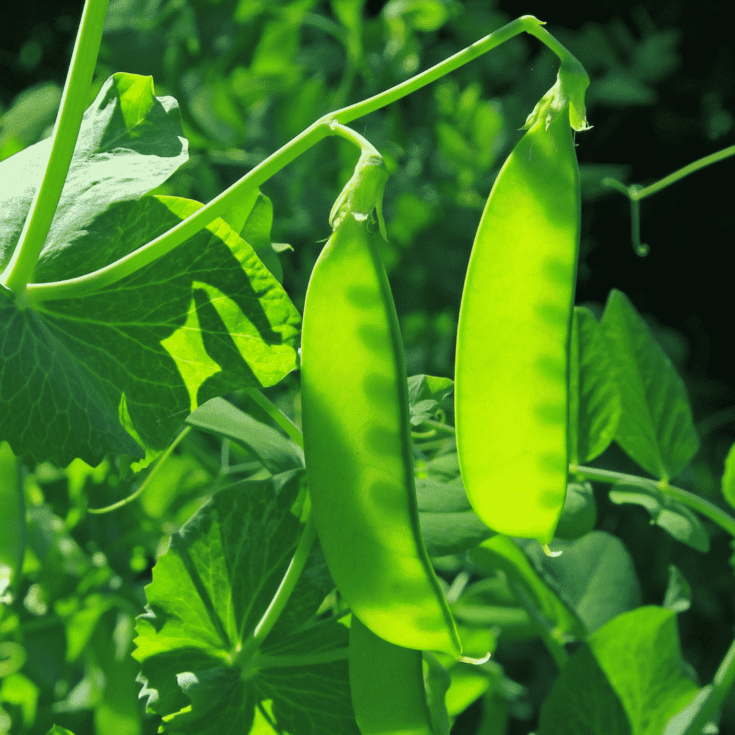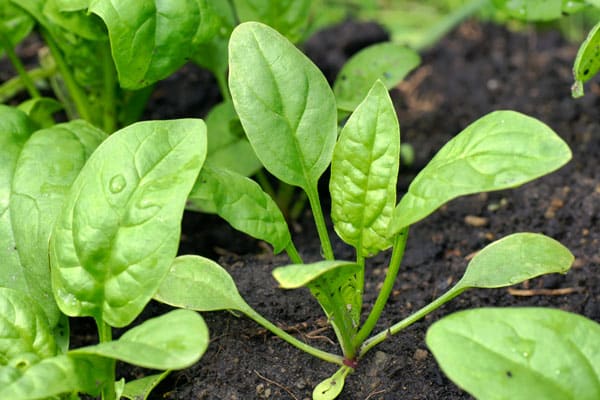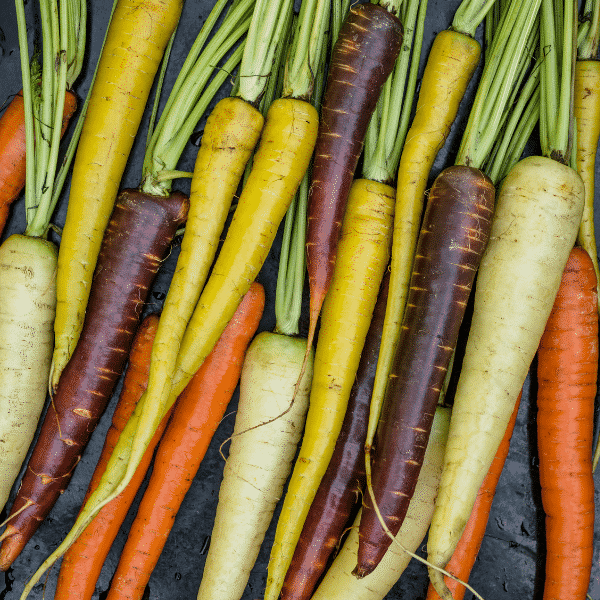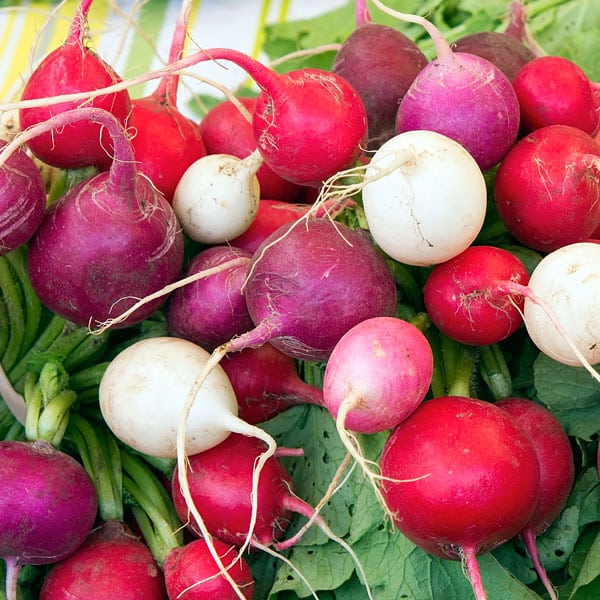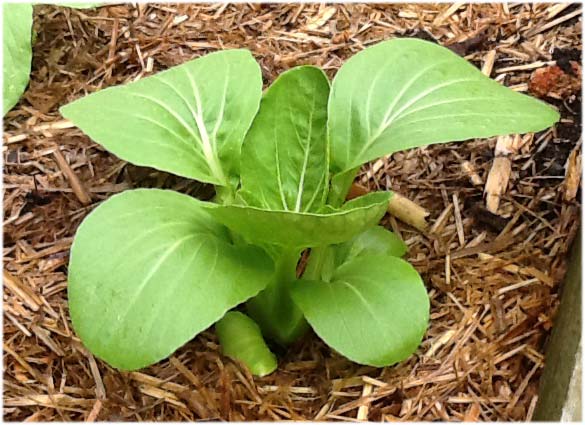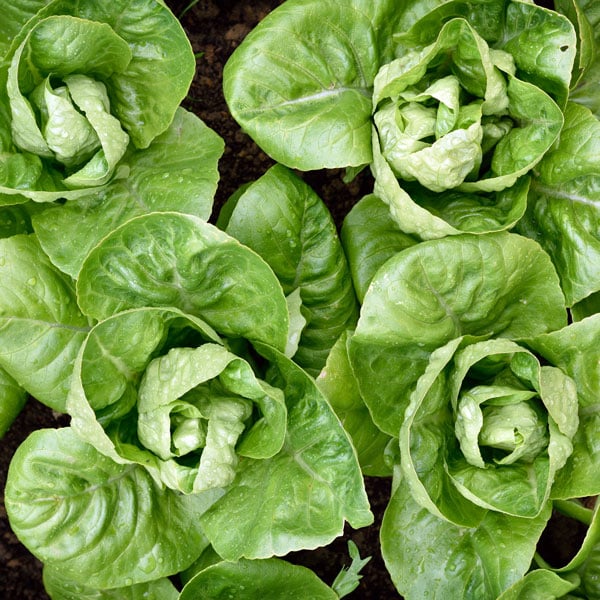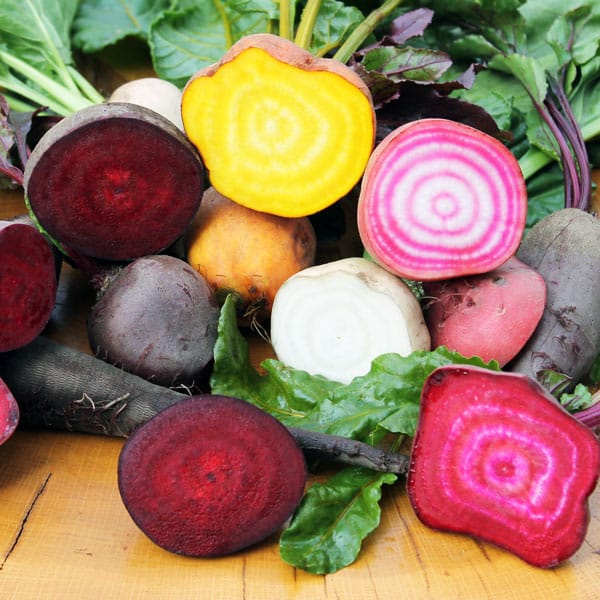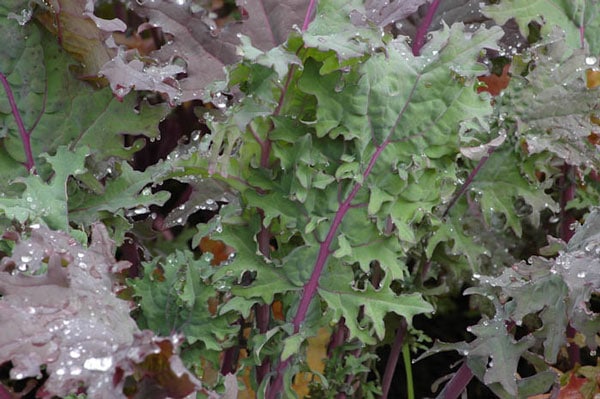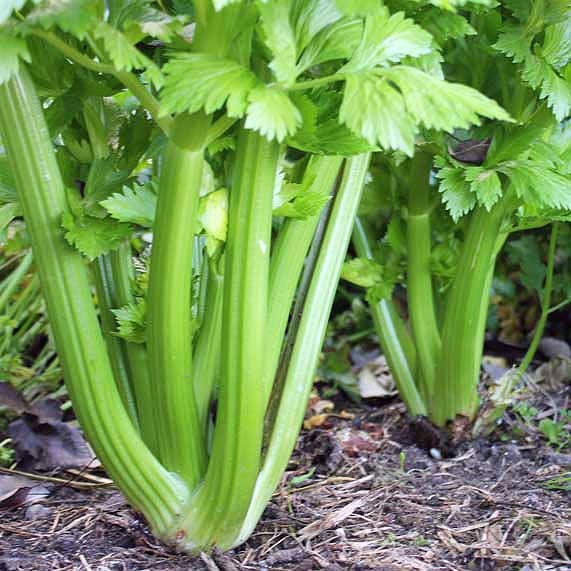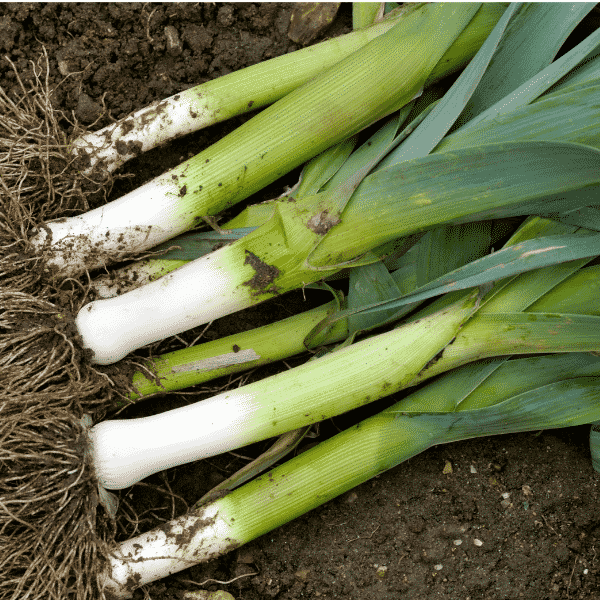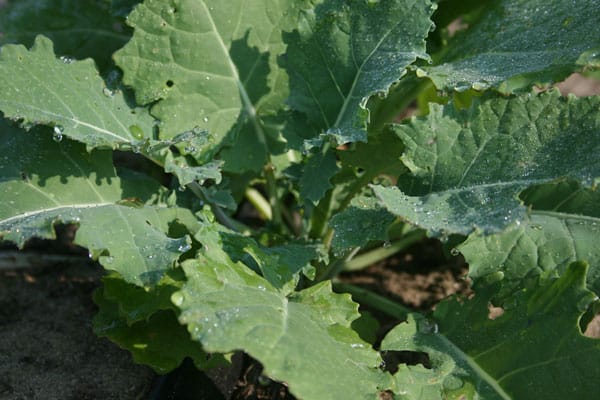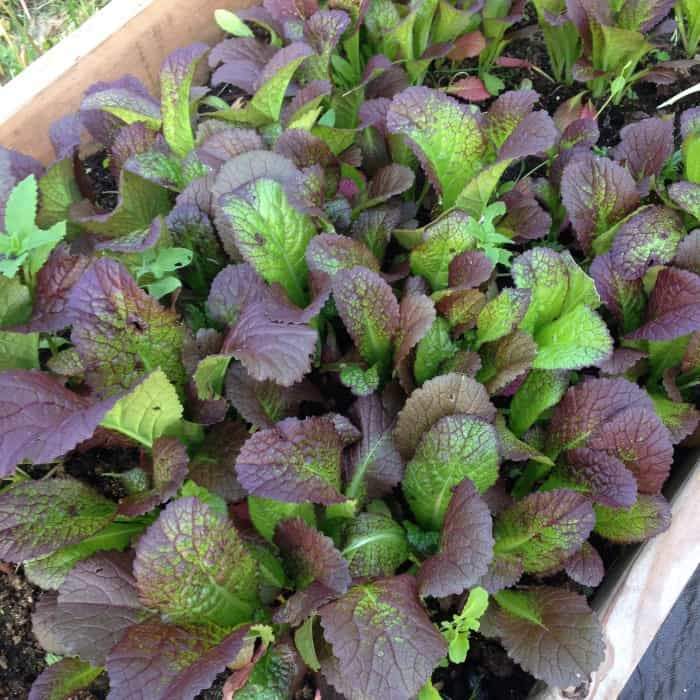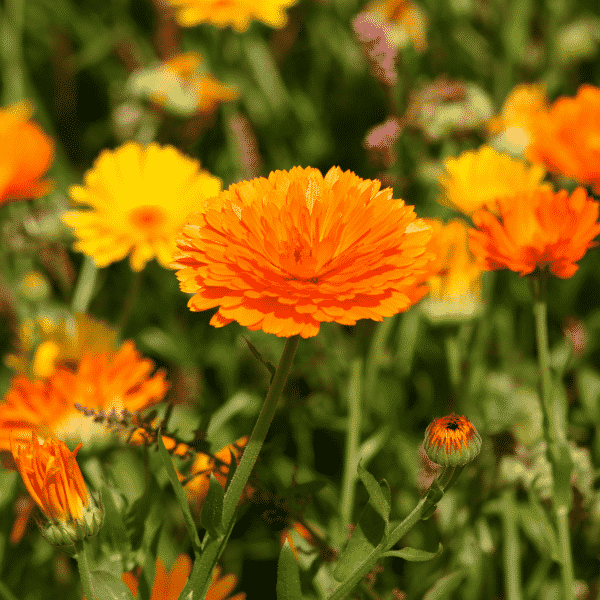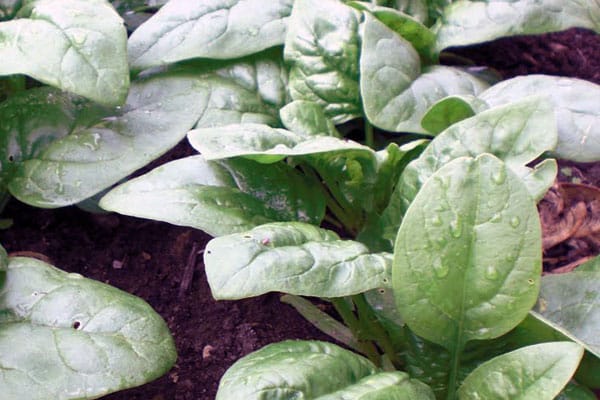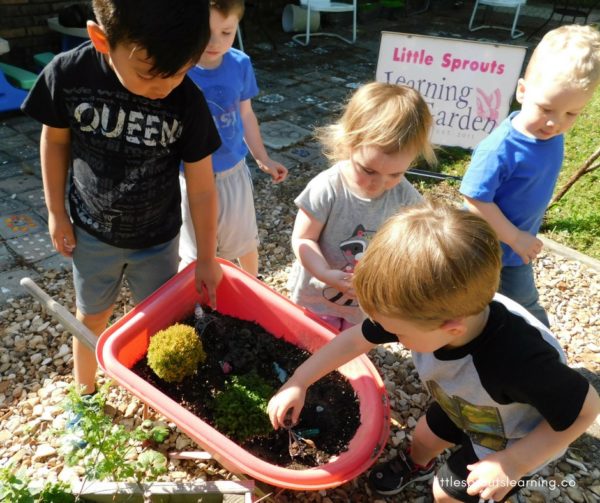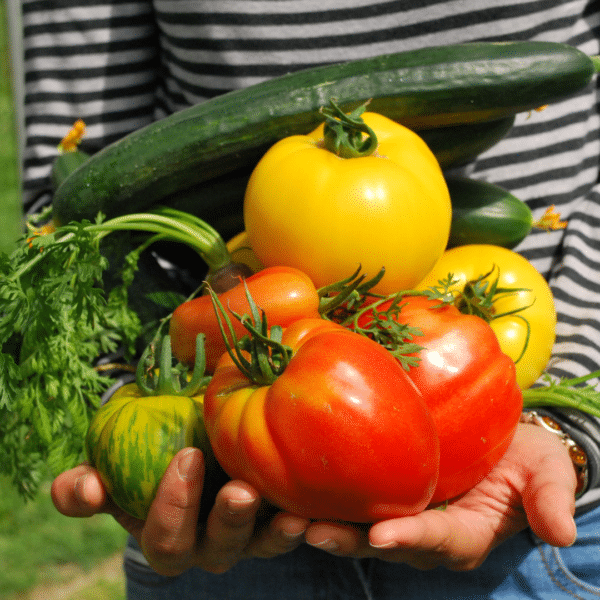This post may include affiliate links.
If you make a purchase, I'll earn a small fee at no extra cost to you.
Learn which vegetables to plant in October, plus the best varieties, planting tips, and recipes for your harvest. These 14 vegetables will grow and thrive through the fall and winter!
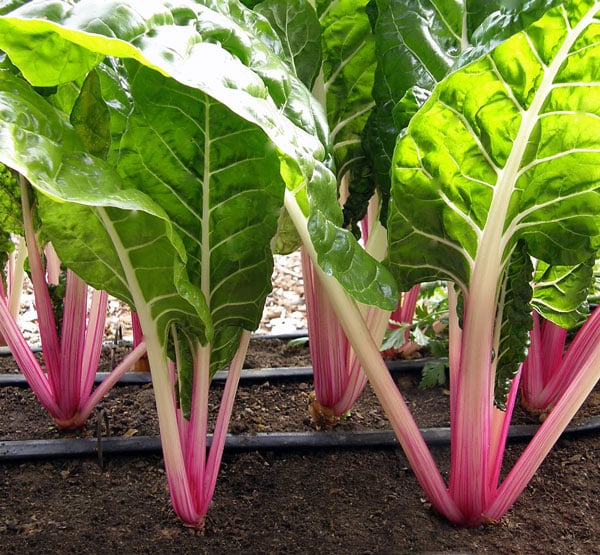
October is time for soup and sweaters, falling leaves and scarves. You might think that it’s too cold to garden—but it’s not! There are lots of tasty vegetables you can plant in October.
All of these vegetables can handle the cold weather just fine. And everyone will be impressed with your gardening skill when you’re harvesting fresh veggies in the winter. 😉
Are you a brand new gardener? Not sure what to plant or when to plant it? I can help.
You’ll find lots of great information in my new book, The First-Time Gardener: Container Food Gardening.
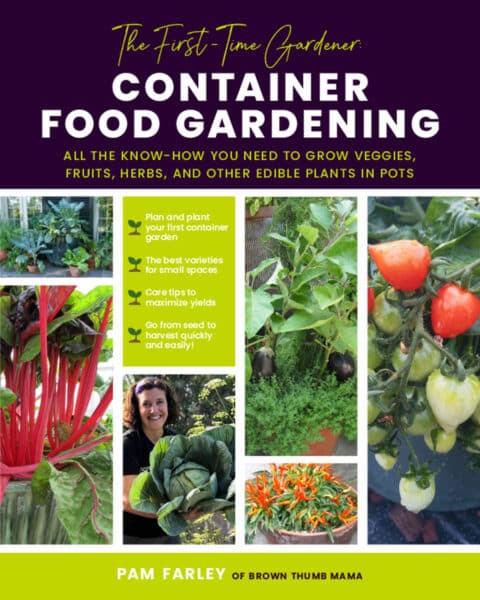
This planting guide for Zone 9 gives you fourteen vegetables you can plant in October for a great harvest this fall. Not sure what planting zone you’re in? No problem. This interactive map will tell you. Let’s go!
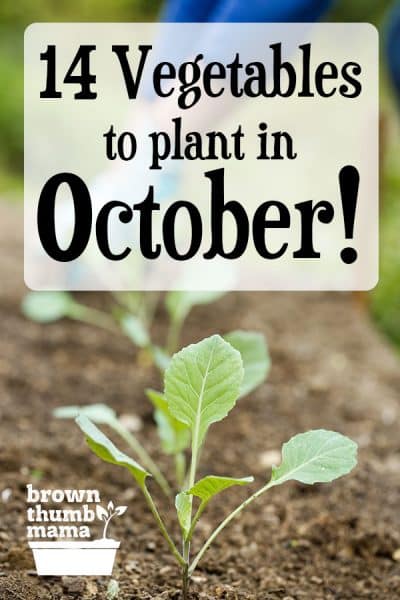
14 Vegetables to Plant in October
Garlic is one of the easiest crops to grow, and it's one that never fails to give me a great harvest. Did you know that each garlic clove you plant grows into an entire head of garlic? That's great news for garlic lovers like me.
Varieties: There are two main types of garlic--softneck and hardneck. I grow softneck because it does best in our mild winters. Here's how to choose the best type of garlic for your garden.
Planting: Garlic does well in containers or directly in the soil. Just watch for weeds, since they don't like the competition. Learn how to grow garlic like a pro with these tips.
Recipes: If you somehow end up with more garlic than you can eat right away, it's easy to freeze for later use.
Whether you're growing snow peas, snap peas, or shelling peas, October is the time to plant them. Our kids love to sit in the garden and eat snow peas right off the vine!
Varieties: Our favorite snow pea variety is Oregon Sugar Pod II. It produces giant, tender snow peas and often sets doubles--two pea pods from each node.
Planting: Snow peas need consistent water, and fertile, loose soil with plenty of phosphorus and potassium. Here’s lots more information on planting and growing snow peas.
Recipes: If you end up getting any peas indoors before the kids eat them all, add them to a stir-fry or Homemade Orange Chicken.
Please don't ever make your family suffer with frozen or canned spinach! Spinach is easy to grow, and is delicious and mild when picked fresh from the garden.
Varieties: Anna Spinach is a new variety that's specifically developed to eat as a baby green. It's perfect for spinach salad, stir-fry, omelettes, or even adding to your morning smoothie.
Planting: Spinach is happiest in cool weather, so a garden spot with afternoon shade is ideal. Sprinkle some seeds on the ground, cover with a thin layer of soil, and you'll start harvesting in just 28 days. Learn more about how to plant and grow spinach.
Recipes: I love to make spinach salad with strawberries and a splash of poppyseed dressing.
My goodness, who knew there are so many different kinds of carrots?!? Different colors, different shapes, and yes--slightly different flavors with each. You’ll probably want to try several different kinds.
Varieties: I like Carnival Blend carrots because of their unique colors, and Tonda di Parigi carrots for their adorable shape. Scarlet Nantes is my variety of choice for for traditional carrots.
Planting: Carrot seeds are tiny! You can either sprinkle them on the top of the soil and thin the carrots once they sprout, or use a seed dispenser to make sure they’re spaced properly. Learn more about growing carrots.
Recipe: Enjoy your garden-fresh carrots in this easy Summertime Slaw recipe.
Radishes are a super easy crop to grow and are a great choice when gardening with kids.
Varieties: Radishes are not just red! I like Easter Egg Blend because you get red, white, rose pink, purple, and bi-color (red top, white base) radishes all in the same seed packet.
Planting: In October, plant the seeds directly in the garden. They’ll grow quickly, and you can harvest your radishes when they’re the size of large marbles (in about a month).
Recipes: I love to eat radishes on my salads or just fresh from the garden. When they're small, they're less spicy.
Bok Choi or Pak Choy is a delicious vegetable that's often overlooked by home gardeners. If you’ve ever tasted it at an Asian restaurant, you’ll definitely want to grow it in your garden.
Varieties: Toy Choy is a minature variety that tolerates the fall heat better than most full-size bok choi.
Planting: Plant seeds outside in October and you'll be harvesting heads with thick, white stems and glossy, dark green leaves in as little as 30 days.
Recipe: Wash carefully, chop, and stir fry with a bit of Black Bean Garlic Sauce. Yum!
Chard is great for new gardeners. It grows vigorously, provides a continuous harvest, and can even survive the winter in mild climates. Ideal, right? Except that if you’re the only person in your family who likes to eat Swiss chard, you will quickly be overrun with it. Ask me how I know.
Varieties: Warnings aside, I like Bright Lights Chard and Five Color Chard because they’re both beautiful and colorful. You could even plant these as ornamentals in your front yard!
Planting: Direct seed in the garden this month, and you’ll be harvesting in December. Learn more about how to grow Swiss chard.
Recipe: I like to chop chard leaves into tiny bits and add it to Baked Italian Meatballs or Homemade Fried Rice.
Going out to the garden to pick a salad for dinner is the best! And, of course, the foundation for a delicious salad is great lettuce.
Varieties: Little Gem Romaine is a petite heirloom variety that has a crisp texture and nutty flavor.
Planting: Lettuce is a cool-weather crop, so plant it in a shady area. Space your seeds or seedlings about 1 foot apart and ¼” deep. Keep the soil moist and watch for garden pests. Learn more about growing romaine lettuce.
Recipe: When you've picked all the vegetables for your salad, top it off with some homemade croutons.
Fresh beets are so much better than those awful canned things we had as kids. And did you know that beets are full of fiber, potassium, folic acid, and vitamin C?
Varieties: I like this Gourmet Blend because it includes 3 different types of beets: Detroit Dark Red with deep red roots and delicious dark green tops, Chioggia with interior rings of bright pink and white, and Golden with bright yellow flesh.
Planting: Plant seeds directly in the garden in October and harvest in December, when roots are between 1-3 inches in diameter.
Recipe: Instead of roasting or pickling your beets, try this delicious beet kvass.
Lots of folks make fun of kale because it’s in everything. Kale chips, kale smoothies, kale salad...the list goes on and on.
There’s a reason for this, though. One cup of kale contains more than your recommended daily value of vitamins K, A, and C. It also has lots of trace minerals, like copper, manganese, phosphorus, and selenium.
Varieties: I like Red Russian Kale, which you grow as a baby green. Cut the leaves after about 25 days and you’ll have tender, tasty kale. Then the plant will regrow for another harvest. Cool, right?
Planting: Set out kale plants in October and you’ll be harvesting your first crop of baby greens in November.
Recipe: I like to chop baby kale finely and sneak it into a salad, or add it to Homemade Fried Rice or Baked Italian Meatballs.
If you never can seem to use up an entire head of celery from the store, you might think that growing it doesn’t make sense. Au contraire! If you grow celery in your garden, you can harvest individual stalks as needed for amazing flavor without waste.
Varieties: My favorite variety is Utah Organic, which is an heirloom celery.
Planting: Set out celery plants in October, and you can start harvesting the outer stalks in December or January.
Recipe: Try this Cornbread Dressing (or stuffing) recipe with homegrown celery. The taste is amazing!
Leek plants resemble a long, fat green onion. The white lower portion has a mild onion flavor, and the green tops are stronger tasting.
Varieties: King Richard Leeks grow quickly and are ready to harvest earlier than other types.
Planting: Direct seed in the garden, ¼ inch deep and 6 inches apart. Seedlings will sprout in 10-14 days, and you’ll harvest about 60 days after that.
Recipe: You can substitute leeks for onions in most dishes. Potato leek soup is a classic, and this version is made in the Instant Pot.
Don’t be afraid of collard greens! Collards are full of fiber, antioxidants, and Vitamins K and A. The large leaves are delicious when steamed, and they also make fantastic wraps (a low-calorie substitute for tortillas).
Varieties: I get my collard seeds from the good folks at Redwood Seeds.
Planting: Sow directly in the garden and allow 2 feet between plants. Collards are a cabbage that doesn’t form a head, so they need room to spread out.
Recipe: Pick the young leaves to add to your green smoothies, and let some leaves grow to add to hearty winter soups.
Mustard greens are new to my garden and palate, but I love trying new vegetables! These are so pretty, they could grow in the front yard and the neighbors would never be the wiser.
Varieties: You'll love this giant Red Mustard from my friends at Redwood Seeds. These huge, beautiful leaves with red and green coloring pack a spicy punch.
Planting: Red Mustard is slow to bolt in the spring, and is resistant to aphids and harlequin beetles. Plant in October and begin harvesting in late November.
Recipes: Their flavor is wasabi-like when eaten raw, but the spice diminishes when cooked--which makes these greens great for stir-fry or soups.
Add some beautiful, hardy poppies and colorful calendula to your garden this month. The bees, butterflies, and your future self will thank you!
Want to know what to plant every month?
Knowing which vegetables to plant in each growing season ensures your plants will thrive and give you a great harvest. Check out my Vegetable Garden Planting Schedules so you know exactly what to plant each month of the year.

